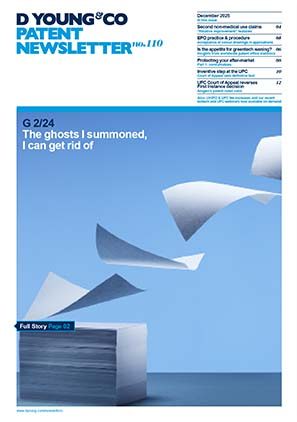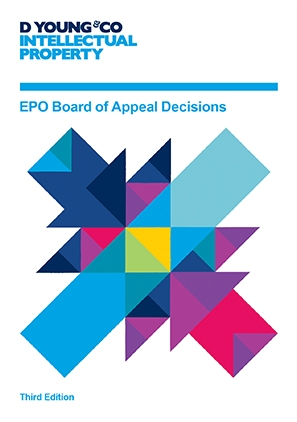G 1/22 & G 2/22: referral to Enlarged Board of Appeal on entitlement to claim priority
Two questions have recently been referred to the Enlarged Board of Appeal regarding entitlement to claim priority. In particular, referrals have been made from related appeals T 1513/17 and T 2719/19 regarding whether the European Patent Office (EPO) has the power to decide on entitlement to a priority right, and how the “joint applicants approach” is to be applied to PCT applications where different applicants are listed for different states.
Questions referred to the Enlarged Board of Appeal
I. Does the EPC confer jurisdiction on the EPO to determine whether a party validly claims to be a successor in title as referred to in Article 87(1)(b) EPC?
II. If question I is answered in the affirmative
Can a party B validly rely on the priority right claimed in a PCT-application for the purpose of claiming priority rights under Article 87(1) EPC in the case where
1) a PCT-application designates party A as applicant for the US only and party B as applicant for other designated States, including regional European patent protection and
2) the PCT-application claims priority from an earlier patent application that designates party A as the applicant and
3) the priority claimed in the PCT-application is in compliance with Article 4 of the Paris Convention?
Background
Article 87(1) EPC stipulates that the entitlement to claim priority belongs to the applicant of the earlier application (the priority application) or their successor in title. The applicant of the later-filed EP application must therefore be the same as the applicant of the priority application, or must be their successor in title. This may appear to be relatively straightforward where there is only one applicant for both the priority application and the later-filed application. However, matters can becoming increasingly complex where multiple parties are listed as the applicant for either or both of the priority and later-filed applications.
It is well-established practice at the EPO that, in cases where the later application is filed by two or more joint applicants and claims priority from an earlier application, the priority claim is valid provided that the applicants (or their successors in title) of the priority application are included in the list of applicants for the later European patent application. In other words, the addition of applicants to the later application is not precluded so long as all of the applicants of the priority application are also included. This is referred to as the “joint applicants approach”, and was summarised succinctly by the Board of Appeal as follows:
"The "joint applicants approach" concerns, in the most simple case, the situation where a party A is applicant for the priority application and parties A and B are applicants for the subsequent application in which the priority right is invoked. Party B can now benefit from the priority right to which their co-applicant party A is entitled. A separate transfer of the priority right to party B is not needed."
Facts of the case
In the case at issue, the priority application was a provisional US application that was filed in the name of the three inventors – inventors “X”, “Y” and “Z”. A PCT application was subsequently filed, claiming priority to this US provisional. As is possible under PCT provisions, the PCT application listed different applicants for different designated states:
- Inventors X, Y and Z were listed as inventors and applicants for the US only;
- Parties V and W were listed as applicants for all other designated states (including European patent), with inventors X, Y and Z listed as inventors only.
In the first instance decisions under appeal, it was held that the priority claim was not valid because the right to claim priority had not been assigned from applicant-inventors Y and Z to either party V or W.
Question II – applicability of “PCT joint applicants approach”
On appeal, the appellant argued that, where the applicants for a PCT application were not the same for all designated states, they should nevertheless be regarded as joint applicants. The appellant thus argued that the “joint applicants approach”, which is applicable to European patent applications, should also apply to PCT applications. The Board of Appeal referred to this as the “PCT joint applicants approach”. Following that approach, the priority claim should be acknowledged as valid because the applicants of the priority application – X, Y and Z – were among the applicants of the PCT application, irrespective of the fact that they were not applicants for the European patent designation.
However, a counter-argument to this was that none of inventors X, Y or Z were applicants for the European patent designation, and therefore that they cannot be considered to be joint applicants for the European patent application at issue.
The Board of Appeal agreed that the applicability of the PCT joint applicants approach is of fundamental importance as several other appeal cases identify this as a disputed concept. The Board of Appeal also commented that the answer to the question of whether the PCT joint applicants approach can be accepted is “not clear cut”, and therefore found it appropriate to refer questions concerning this matter to the Enlarged Board of Appeal.
The answer to question II may be of most relevance to cases where a priority claim is made in respect of a US provisional application filed before March 2013 (pre-AIA), back when inventors were often listed as the applicants, such as was the case in the referring decisions. However, although this may no longer be common practice, there are still many cases before the EPO where such priority claims are at issue. Additionally, the referred questions are not limited to the particular scenario of a pre-AIA US provisional application, and the answers will thus have implications for any application that lists different applicants for different states.
Question I – jurisdiction of the EPO to decide on entitlement to priority right
Of note is that the Board of Appeal’s referral has not been limited to the question of applicability of the joint applicants approach for PCT applications, but also raises the question of whether the EPO has jurisdiction to determine whether a party validly claims to be a successor in title under Article 87(1) EPC. The Board of Appeal acknowledged that this issue has been addressed at length in the recent CRISPR-Cas decision, T 844/18. In this earlier decision, it was confirmed that there is no legal basis in the EPC for disregarding the requirement for the EPO to examine who can claim priority.
CRISPR patent appeal decision: EPO maintains “all applicants” approach to priority
See our report regarding the Board of Appeal’s decision, December 2021.
Read moreWhile the Board of Appeal in the present case was inclined to agree, they nevertheless considered the jurisdiction of the EPO to decide on the entitlement to the priority right has been questioned ex officio in a series of other cases, and that this issue will therefore most likely be raised again. The Board of Appeal thus considered that – given that a referral is being made to the Enlarged Board of Appeal on the question of entitlement to claim priority – this will be a “convenient opportunity” to have a final decision on the question of the EPO’s jurisdiction as well.
The answer to this question in particular could have serious implications for how priority is generally assessed by the EPO, particularly during opposition where entitlement to claim priority is often at issue. An answer in the negative would represent a significant shift in current practice, seeming to go against established case law of the EPO, and would have large ramifications for many cases that are yet to be decided upon.
We await the decision with interest.


